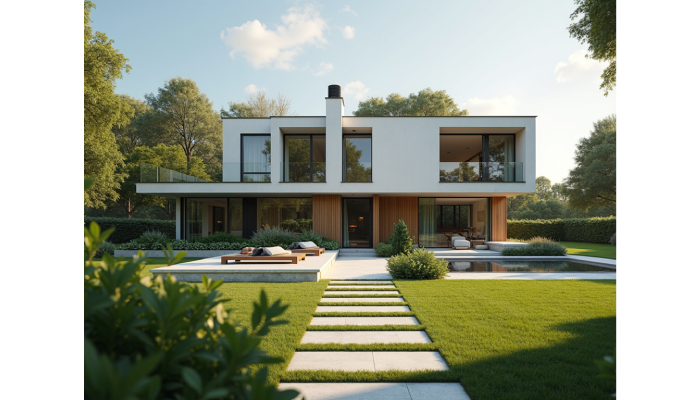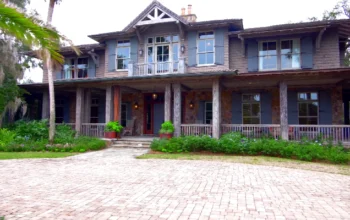In the ever-evolving world of property development and architectural design, bridging the gap between conceptual blueprints and the final constructed reality has always been a complex task. Architects, developers, designers, and clients often operate within separate spheres, speaking different visual languages and relying on static 2D plans to communicate dynamic 3D visions. Enter real estate visualization software—a transformative technology that not only visualizes buildings before they’re built but also facilitates a deeper, more creative collaboration between all stakeholders.
What was once a niche tool for architects has now become an essential part of the real estate and design ecosystem. From conceptual development to stakeholder presentations, this software helps transform abstract ideas into vivid, photorealistic images. But its real power lies not just in the visuals—it lies in what those visuals make possible: faster decision-making, fewer miscommunications, and projects that align more closely with the original vision. In this article, we’ll explore how real estate visualization software is shaping a new era of collaborative design and why it’s revolutionizing the future of built environments.
1. The Shift from Static Plans to Interactive Storytelling
Traditional architectural blueprints have long served their purpose in construction, but they often fall short in helping non-technical stakeholders, such as real estate investors, homebuyers, or marketing teams, fully grasp the spatial relationships, lighting effects, and material finishes of a proposed property. Real estate visualization software fills this gap by offering a dynamic narrative of the space.
Instead of flipping through floor plans, clients can now take immersive virtual tours, explore different design options, and even see how natural light changes throughout the day in a living room. These interactive elements allow teams to communicate complex design elements in a more intuitive way, enhancing engagement and reducing the need for constant revisions. In essence, the project becomes a visual story told collaboratively, with everyone able to see, react, and refine in real time.

2. Real-Time Feedback Loops: The Core of Creative Collaboration
One of the most powerful capabilities enabled by real estate visualization software is the real-time feedback loop. Traditional workflows often suffer from delays caused by versioning, misunderstandings, and disconnected communication. Visualization tools bridge these gaps by allowing design iterations to be reviewed and adjusted almost instantly.
For example, a development team working with a design studio can request modifications to wall textures or landscape elements and see the results within hours, sometimes even minutes, depending on the complexity of the changes. This kind of responsiveness fosters a collaborative, agile design culture, where ideas are shaped through continuous input from architects, designers, and clients alike.
This methodology mirrors the approach taken by innovative studios that emphasize client-centric visual design, ensuring that stakeholders are involved from concept to completion, ultimately producing work that is more aligned with client goals and less prone to late-stage pivots.
3. Enhancing Stakeholder Buy-In with Visual Confidence
Convincing investors, securing permits, or even marketing a space before it exists all depend heavily on the ability to communicate potential. Static floor plans and mood boards often fall short when the goal is to evoke an emotional connection or secure financial backing. Real estate visualization software acts as a powerful persuasion tool by building visual confidence.
Photorealistic renderings and walkthroughs can evoke the feeling of being in a completed space, something that simple architectural drawings cannot achieve. For commercial projects, this means better presentations to city planners or business partners. For residential developments, it allows real estate agents to pre-sell units off-plan using compelling visuals that showcase premium finishes, scenic views, or community features.
The impact? Faster approvals, stronger stakeholder alignment, and an elevated perception of the project’s professionalism and potential—elements critical to any successful property development.
4. Future-Proofing Design Decisions with Visualization Technology
Design trends, client preferences, and building technologies evolve rapidly. Making irreversible design decisions early in a project without adequate visual context can lead to costly redesigns later. Real estate visualization software acts as a future-proofing mechanism, allowing developers and architects to simulate different design outcomes before committing.
Whether it’s testing out smart home integrations, comparing sustainable building materials, or exploring different interior styles, these tools enable teams to experiment visually without incurring real-world costs. This experimentation promotes innovation and reduces risk, especially in large-scale developments where design decisions carry high financial stakes.
Moreover, many platforms now integrate with BIM (Building Information Modeling) systems and other architectural software, creating a holistic project ecosystem where visualization is just one part of a larger, data-rich design process. This creates opportunities not just for better visuals, but for smarter, more resilient design choices.
5. Democratizing Design: Visualization as an Inclusive Tool
As technology becomes more intuitive and accessible, real estate visualization software is no longer reserved for high-end architectural firms. Freelancers, startups, and mid-sized developers are increasingly adopting these tools to deliver professional-grade visuals without the need for massive budgets. This democratization is having a profound impact on the design industry.
Smaller design studios and start-ups—especially those prioritizing collaborative workflows and cutting-edge visual storytelling—can now compete with larger firms by offering comparable (and often more personalized) services. This shift also opens the door to greater client involvement, as many platforms offer cloud-based sharing, feedback tools, and mobile access, enabling clients to stay engaged whether they’re across town or the globe.
By bringing all voices into the conversation and making high-quality visualization more affordable and accessible, this technology is fostering a more inclusive and participatory design process—a vital step forward in an industry where the client’s vision is often lost in translation.
Conclusion
What began as a utility to create beautiful images has matured into a catalyst for systemic change in how we approach architectural design, real estate development, and client collaboration. Real estate visualization software does more than show what a space will look like—it redefines how people imagine, refine, and share their ideas.
In an industry where time, clarity, and cohesion are critical, the value of visualization lies not just in aesthetics, but in enabling truly collaborative and intelligent workflows. Whether you’re a large-scale developer, an interior designer, or a creative startup, embracing visualization technology means creating with confidence, communicating with clarity, and delivering with purpose.
As this technology continues to evolve—incorporating AI, augmented reality, and real-time rendering—it will further reshape the boundaries of creative collaboration, bringing us closer to a future where every design decision is as informed as it is inspired.




